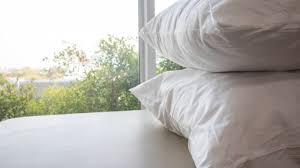
Is your pillow cover dirtier than the toilet seat? 
We all spend our day surrounded by many germs. Be it the switch board of the house or the door handles or the washbasin, mopping cloths, bed sheets, pillow covers, towels, combs, tv or AC remote controls, water bottles, refrigerator handles, sofas, thousands and millions of germs are hidden everywhere, which can make you sick at the slightest opportunity. If you think that your toilet seat is a home to dirty and dangerous bacteria, then you are wrong, because a new study has revealed that pillow covers contain more bacteria than toilet seats. Let's know how to avoid them...
Pillows have more bacteria than toilet seats
According to a report by an American NGO, National Sleep Foundation, pillow covers that have not been washed for about a week contain more bacteria than toilet seats. Bedding, which also includes bed sheets and pillow covers, can accumulate a large amount of bacteria over time if not cleaned regularly.
According to the report, after four weeks without washing, both pillow covers and sheets can contain millions of colony-forming units (CFU) per square inch. After sleeping on your pillow cover for a week, it accumulates more than 17,000 bacteria than a toilet seat, or more than 3 to 5 million colony-forming units of bacteria per square inch. According to the report, the common types of bacteria found in bedding are gram-negative rods, gram-positive rods, bacilli and gram-positive cocci. Some of these bacteria can cause infection.
How do bacteria accumulate in pillow covers?
Our body is in contact with the pillow every night, due to which many types of dirt accumulate in it. Due to sweat and oil, dead skin cells, hair dirt, saliva and moisture, bacteria grow rapidly and accumulate on it. Which most people do not pay attention to.
Harmful effects of dirty pillow covers
1. Dirty pillows can cause problems like acne, rashes and allergies.
2. Asthma and allergies can be triggered by the dust and bacteria accumulated in the pillow.
3. Dirty pillows increase the risk of dandruff and scalp infections.
4. There is a risk of infection from bacteria and viruses.




 click and follow Indiaherald WhatsApp channel
click and follow Indiaherald WhatsApp channel